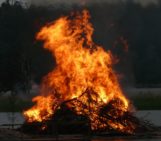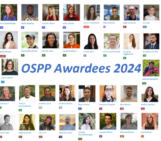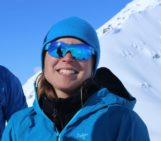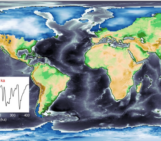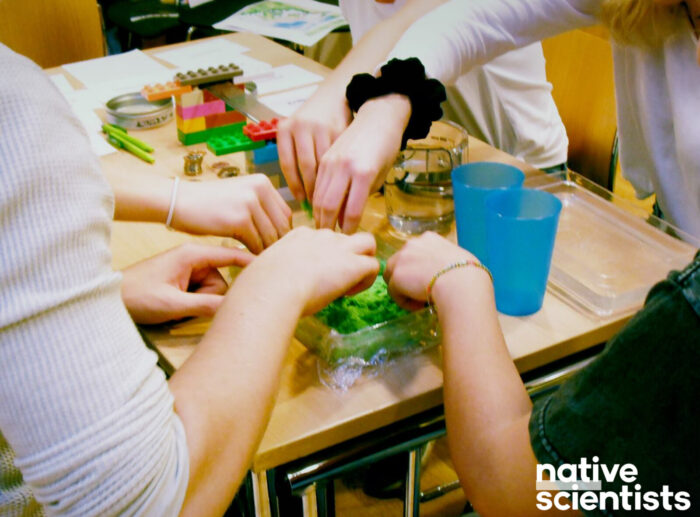
Are you ready to dive into the fascinating mutual symbiosis of science, culture, and education? Be ready to be inspired by the blog editor-in-chief of our division blog, Rebekka Steffen, who is a researcher at Lantmäteriet in Sweden, where she specializes on glacial isostatic adjustment—think rising land, ancient ice sheets, and Earth’s stress fields!
But there’s more to Rebekka than cutting-edge research: she was involved with ‘Native Scientists’, an initiative that connects kids with scientists who share their language and cultural background.
From running hands-on workshops to breaking down language barriers in science, Rebekka’s story is all about inspiring the next generation of scientists in the most creative and inclusive ways. Her answers inspire us how we all could also contribute to spreading scientific ideas in younger minds from diverse backgrounds, making geosciences more inclusive and diverse.
Let’s get into it!
Can you please tell us what ‘Native Scientists’ is?
Sure. ‘Native Scientists’ is an organization that brings scientists and kids together to get them excited about science and open up educational opportunities. They run workshops, often in languages other than English, to connect scientists with kids who share the same language or are learning a new one. This way, kids feel like science is something they can relate to and understand. For example, ‘Native Scientists’ might organize a workshop with Portuguese-speaking scientists for kids in the UK who speak Portuguese at home. Thus, science is combined with cultural identity. By interacting with scientists who share their language or background, kids can see a path for themselves in science. ‘Native Scientists’ is working to close gaps in education and representation, making the science world more inclusive and diverse by breaking down language and cultural barriers.
These workshops are very interactive, with hands-on experiments, talks, and discussions that make science feel fun and accessible.
That sounds like a great initiative! How did you get involved in Native Scientists?
‘Native Scientists’ was looking for German-speaking scientists in Sweden to help run a workshop with the Goethe-Institut. They had an advertisement via Facebook (those days when Facebook was frequently used) and I was working at Uppsala University. This time, the workshop wasn’t aimed at kids who spoke German at home but at teenagers learning German as a third language, after Swedish and English. The workshop was a huge success, and I found the whole idea fascinating—especially since I already had a kid at home that time and really saw the value of talking about science in one’s native language. After the workshop, ‘Native Scientists’ asked if one of us wanted to take on the role of Project Manager for German in Sweden, and I was eager to keep organizing workshops in Sweden!
Awesome! Can you take us through what does a ‘Native Scientists’ workshop include?
These workshops are very interactive, with hands-on experiments, talks, and discussions that make science feel fun and accessible. Usually, there are four scientists at each workshop, and the setup is a bit like speed-dating: each scientist sits with a small group of kids—about five or six—and after about 20 minutes, the kids switch tables to meet a new scientist. During each session, the scientists share what they do and connect with the kids.
Another aspect of a ‘Native Scientists’ workshop is that kids are asked to draw what they think a scientist looks like and what they want to be when they grow up. We didn’t do this in the workshops I was involved in as “my” kids were too old for this activity. ‘Native Scientists’ collects these drawings and statements, selects a few, and shares them with the ‘Native Scientists’ coordinators, who then vote for the best drawing and statement.

Me trying to explain how the mantle reacts to a load during a Native Scientists workshop in Stockholm in October 2017 in collaboration with the Goethe-Institut (original picture at https://www.nativescientists.org/challenging-assumptions).
That sounds exciting! It must feel challenging but rewarding to teach students scientific ideas and make it fun at the same time! Do you encounter any challenges while speaking to children from different backgrounds, during the workshop?
One of the trickiest parts was explaining scientific ideas in German. A lot of scientific terms are in English, so I had to remember the German equivalents! Plus, since the kids were learning German as a third language, I had to simplify things and explain the scientific terms really clearly. In addition, engaging teenagers is very challenging, so you have to come up with some exciting topics or hands-on experiments.
I tried it by teaching them about how earthquakes relate to the process of glacial isostatic adjustment, the latter is something the kids in Sweden are familiar with from school. They know that the land is rising because of past ice masses, but the connection to earthquakes was totally new to them. I also chatted with Swedish friends beforehand to get a sense of what kids in Sweden learn about land uplift and why it happens. I used some magic clay and sand to describe how the Earth reacts to the loading of ice sheets. So, they had something to play with during the workshop. 😉 I might not have reached all of them, but at least a few seemed interested in the topic. I guess getting a thumbs-up from a Swedish teenager is a good sign.
Indeed! I can see that, you being multilingual, really helps in explaining the scientific terms being used. One has to be clear in the scientific ideas (which is the job of a scientist) and on top of that clear enough to pick the right words in the new language, which in fact is the job of a translator!
I also tried to invite a few female native scientists to show the students that science is a diverse field
Which languages have been touched so far? Apart from the children speaking European languages, do ‘Native scientists’ also target children from other backgrounds like from Asian countries?
They offer a lot of languages, but not English. 😉 They indeed organize many workshops in the European languages, like Portuguese, Italian and Estonian, but they also have workshops in Arabic and are even planning workshops in Igbo.
Wonderful! How are the topics selected for a workshop? It surely must be a meticulous process as science is a diverse field and children must be of different age-groups to connect to.
The first step is finding enough native scientists willing to contribute to the workshop, which can be quite challenging unfortunately. If I had had more scientists than needed for the workshop, I would have aimed to cover a variety of topics. For example, I once organised a workshop at a technical school in Sweden and there I tried to find native scientists with a background in natural sciences, like Physics or Informatics. I also tried to invite a few female native scientists to show the students that science is a diverse field and you don’t have to be a man to become a scientist.
That’s certainly a good initiative! Women in science can directly inspire young girls to take up science as a career. What qualifications are required to become a part of ‘Native Scientists’ for contributing to the purpose?
It’s simply about being a scientist whose mother tongue isn’t the primary language of the country where you work. Once you have participated in a workshop and you see potential for more workshops in your region, then ‘Native Scientists’ will work with you together to get things started.
Do you go through some pre-workshop training, as we are dealing with sensitive minds here?
Yes, every native scientist has to attend a pre-workshop training where you learn how to talk to kids. It might sound a bit weird, but talking with kids about your research is so much different than talking to your colleagues or even parents. The training is a great way to get started – it helps you prepare your material for the workshop and gives you useful tips from experienced science communicators.
As an outsider, how can one contribute to the purpose?
Advertise this exciting organization and get involved in workshops. Check their website to see where they are currently organizing workshops. In addition, Native Scientists is a non-profit organisation and they are depending on donations so that they can reach more children, languages and cities.
We would like to thank Rebekka for her time to answer our questions as a Native Scientists representative, and helping instilling inspiration in young children for science.

